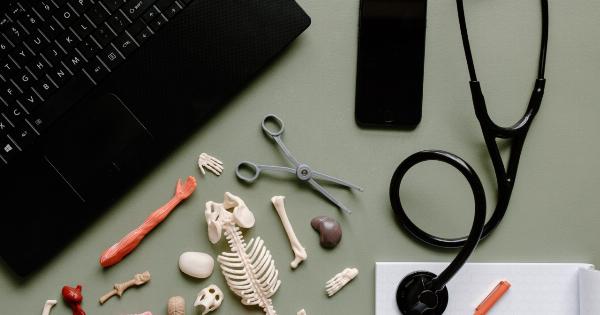Performing self breast examination at home is an important step towards early detection of breast cancer.
While the thought of examining your own breasts can be intimidating, it’s an effective way to become familiar with your breasts’ normal look and feel. Knowing what’s normal for you can help you detect any changes early, increasing your chances of successful treatment.
This article will guide you through the steps of self breast examination and help you understand what to look for in your findings.
Step-by-Step Guide for Self Breast Examination
Performing self breast examination is a simple process that you can do at home. Here are the steps to follow:.
Step 1: Take off Clothes and Find a Comfortable Position
Begin by taking off your clothes, including your bra. Stand in front of a mirror and examine your breasts for visual changes, such as swelling or dimpling. Raise your arms above your head and look for the same changes.
Step 2: Lie Down and Examine Your Breasts
Lie down on your back and place a pillow under your right shoulder. Use your left hand to examine your right breast. Begin at the outer edge of your breast and move your fingers towards the nipple. Use a circular motion to examine the entire breast.
Press firmly with the pads of your fingers and look for lumps, thickening, or other changes. Pay attention to any changes in the texture or appearance of your skin and nipples. Repeat the process on your left breast, using your right hand.
Step 3: Check for Nipple Discharge
Squeeze each nipple gently and look for any discharge, such as clear or bloody fluid. If you notice any discharge, make an appointment with your doctor.
Understanding Your Findings
After you complete your self breast examination, it’s important to understand what you’re looking for and what your findings mean. Here are some common findings and what they could indicate:.
Lumps or Masses
Finding a lump or mass in your breast can be scary, but it’s not always a sign of cancer. In fact, most breast lumps are not cancerous.
However, it’s important to have any lumps evaluated by a healthcare provider to determine if further testing is necessary. Your healthcare provider may suggest a mammogram or ultrasound to get a better look.
Dimpling or Skin Changes
Changes in the texture or appearance of your skin can be a symptom of breast cancer. Look for areas of the breast that are dimpled or puckered, or skin that looks like an orange peel.
These changes could indicate that cancer is pulling on the skin, causing it to dimple. If you notice any skin changes, see your healthcare provider right away.
Breast Pain or Tenderness
Breast pain or tenderness is a common complaint among women. It can be caused by a variety of factors, including hormonal fluctuations, injury, or infection. If you experience breast pain or tenderness, talk to your healthcare provider.
They may suggest over-the-counter pain relievers or other treatments to help alleviate your symptoms.
Nipple Discharge
Most nipple discharge is not a sign of breast cancer. In fact, many women experience nipple discharge during their lifetime, particularly during pregnancy or breastfeeding.
However, if you notice any discharge that is bloody or occurs spontaneously, see your healthcare provider.
Breast Cancer
If you receive a breast cancer diagnosis, it’s important to know that there are treatment options available. Your healthcare provider can help you understand your diagnosis and develop a treatment plan that’s right for you.
Breast cancer treatment may include surgery, radiation therapy, chemotherapy, or a combination of these treatments.
Conclusion
Performing self breast examination at home is an important step towards early detection of breast cancer.
By becoming familiar with your breasts’ normal look and feel, you can detect any changes early, increasing your chances of successful treatment. Remember to schedule regular mammograms and clinical breast exams, and talk to your healthcare provider if you notice any changes in your breasts. Together, we can beat breast cancer.

















